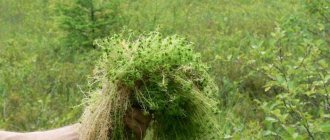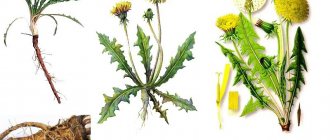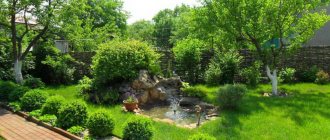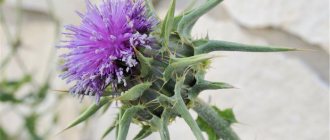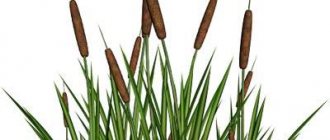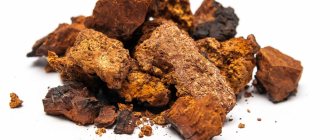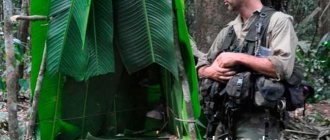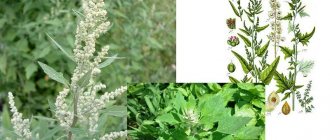Is it possible to eat tree bark?
If you have two alternatives - starve to death or eat bark, then it makes sense to think about your belt, laces and shoes. When all the leather clothing is eaten and nothing else remains, then yes, you can eat the bark . However, eating tree bark has several nuances. First of all, tree bark contains a lot of fibers. You can try to chew it until your cheekbones tighten and it takes the shape of a large, chewy ball. But there are several ways that will allow you to prepare a relatively tasty and usable product from the bark. If you fry the bark until crisp, it will resemble potato or corn chips and will be quite tasty.
How to properly prepare bark?
Some survivalists say that you can cut pine bark into slices and cook it like pasta. I did this experiment and I want to say that after a few hours of boiling, the bark did not become soft, and it did not remind me of spaghetti in any way. So, unlike these smart guys, I will not write a theoretical version of preparing bark, but something that is actually possible to implement in field conditions.
The most preferred method for me is frying pine bark in vegetable oil until crispy and golden brown in a cauldron. This method can be compared to cooking brisket, bacon or chicken wings.
I can easily eat a lot of these “crunches” instead of a snack, for example, with beer, and they will be a wonderful addition to any main meal, especially in circumstances where it is necessary to survive in the forest. Speaking about taste data, we can definitely note the presence of sugar and starch in pine bark. If we consider that the bark acts as a conductor of vitamins and minerals, nourishing the tree, we can conclude that it contains a large amount of useful substances and vitamins.
If you don’t have oil on hand, then the second good method to prepare the bark is to burn it over a fire. In this case, we simply burn the bark without using oil. When the bark is fried and golden, it can be turned into a flour mass and added to regular flour, or used instead of starch for first courses.
As we can see, with the proper approach, tree bark is quite suitable for food . Trees do not run away, and collecting bark will not be difficult; this method of obtaining food in extreme conditions is much more prudent than hunting snakes.
EDIBLE WILD PLANTS
In our country there are over two thousand plants that are fully or partially edible. Their total weight amounts to hundreds of thousands of tons. And all over the world there are more than 120,000 varieties of similar edible plants!
Almost any geographical area, with the possible exception of the floating ice of the Arctic Ocean and the glaciers of the highlands, can provide a person with a vegetarian lunch, which will include a salad, first, second, third courses, and possibly an exotic dessert!
Plants have edible: rhizomes, bulbs, stems, shoots, buds, leaves, flowers, seeds, fruits, nuts, cones, etc. Some parts of plants can be eaten raw, others - after thorough boiling, frying or other thermal processing, as well as drying, soaking and other methods.
Nuts, fruits and tubers have the greatest nutritional value. The most productive soils are located near bodies of water - rivers, lakes, swamps. Edible plants such as reeds, cattails, and reeds often stand as a solid wall. Water lilies and water chestnuts, revered as a delicacy by the ancient Egyptians, float on the surface of the water. From the rhizomes of many aquatic plants that have been previously dried and ground into flour, you can bake bread cakes and cook porridge.
Edible parts of trees.
Not only herbaceous plants are edible, but even trees! No, this does not mean that in the depths of the taiga there grows a little-known sausage tree, which, after being cut down, can be cut into circles, like an ordinary doctor’s sausage. Of course not. It is not the trees themselves that are edible, but their individual components, and even then not at any time of the year. For example, cones, acorns or sapwood - thin young bark adjacent to the trunk.
Pine
can offer five edible parts to the table: unopened flower buds, young shoots, sapwood, cones, etc. as a vitamin drink, pine needles.
By the birch
In addition to sapwood and juice, you can eat buds and young leaves, which contain up to 23% protein and 12% fat.
is almost entirely edible . This shrub, no more than 60 cm high, is often found in the tundra. It grows in groups, sometimes completely covering the ground. In the polar willow, in early spring, the internal parts of young shoots freed from bark are eaten. You can even eat them raw! In addition, the young leaves are edible and are 7-10 times richer in vitamin C than oranges. Blooming "earrings". Young roots, cleared of soil. And even the trunks, freed from bark, well boiled and ground (Fig. 77)
Edible trees include oak (Fig. 78).
Since ancient times, the inhabitants of Europe have saved themselves from hunger using oak acorns. Acorns were collected at the end of September or immediately after the first frost. Raw acorns are not suitable for food due to the abundance of tannins in them. Therefore, they were peeled, cut into four parts and filled with water, soaked for two days, changing the water three times a day to eliminate the bitter taste. Then they poured water again in the proportion of two parts water to one part acorns and brought to a boil. The boiled acorns were scattered in a thin layer in the open air on a wooden baking sheet to pre-dry, and then dried in an oven or on the stove until the acorns began to crunch like crackers. After this they were pounded or ground. At the same time, coarse grains were used for porridge, and flour was used for baking flat cakes.
I will quote several ancient recipes for foods made from trees.
“Next, dried fish roe is prepared, which is intended mainly for men who go into the forest to catch wild animals. Having with him one single pound of this dried caviar, Kamchadal is provided with provisions for a whole month, because when he wants to eat, he cuts off the bark of a birch tree (and they grow here everywhere in abundance), removes the upper soft bark, and the hard part of it, adjacent just to the trunk of a tree, spreads a small amount of fish roe he took with him, and then eats it like a cracker or like a sandwich, which is all his food.”
“The bark (of birch) is in great use, for the inhabitants, having scraped the bark from a damp tree, chop it with hatchets, like noodles, finely and eat it with dried caviar with such pleasure that in winter you cannot find a Kamchatka prison in which women would not sit near the damp birch ridge and did not crumble the declared noodles with their stone or bone axes.”
“Dried sapwood of larch or spruce, rolled into a tube and dried, is used as food not only in Siberia, but also in Russia up to Khlynov and Vyatka during famine years.”
“The Chukchi used leaves and young shoots of willow to prepare one of their favorite dishes and stored them for future use. Bags made from seal skins were stuffed with willow, and this kind of silage was left to sour throughout the summer. In late autumn, such an acidic mass froze and in the following months it was cut into slices and eaten like bread.”
I hope the above lines have convinced skeptics that trees can be used not only as firewood or building material, but also served!
The most nutritious and tasty sapwood
(sometimes incorrectly called bast) in the spring, during the period of sap flow and intensive growth of the tree. Although, in principle, it can be used for gastronomic purposes in summer and autumn. Some sources claim: during severe famine, northern peoples also ate winter sapwood as an additive to other products. Although, probably, at this time of year it is no longer much different from the top crust. But, as they say, hunger is not an aunt, there is no time for gourmet food here.
Moreover, I read historical chronicles that talked about eating bark in general, although it is generally accepted that the upper bark of trees, due to the too rich content of tannins, is not suitable for food. It's difficult to figure this out. It probably all depends on the degree of hunger. In my life, I also ate a lot of things that I thought should not be eaten in principle.
Academician Likhachev said in one interview that in besieged Leningrad, people dying of hunger ate sawdust (!), for which they threw it into the water, where the tree, having been there for a long time, began to ferment. They ate this fermented, smelly, but protein-producing mushy mass.
When harvesting sapwood, it is best to remove it at the base of the trunk or even from thick roots that have emerged to the surface of the earth, where it is most nutritious and juicy.
There are different methods for extracting sapwood.
The simplest is to use a knife or an ax to make two deep circular horizontal cuts on the trunk and two vertical ones connecting them. Remove the top bark by prying it off on one side with a knife. If it does not yield well, you can use small wooden wedges driven between the trunk and the bark (Fig. 79).
In principle, sapwood can be eaten raw - its taste is sweetish, of course, not without a “woody” aftertaste. Long-term cooking significantly improves its taste. Sapwood, immersed in boiling water, gradually soaks, swells and turns into a uniform gelatinous mass, which, after slightly cooling, should be eaten.
If this “porridge” is dried on stones heated over a fire, or another improvised frying pan, then the resulting flour can be used for baking bread cakes.
birch is considered the most nutritious.
,
willow
,
maple
,
pine
,
aspen
,
larch
,
spruce
,
poplar
. By the way, all of the trees listed above, except larch, have edible buds and young shoots raw, but better when cooked.
The sap of juice that has evaporated and thickened on the trunks, reminiscent of chewing gum, is nutritious.
Nature generously provides a variety of edible herbs, roots, tubers, berries, and mushrooms. When preparing for a trip, it is useful to familiarize yourself with the flora of the latitudes where you are going, and add a number of others to the edible plants you already know. It is very important to know not only what you can eat, but also which plants you absolutely cannot eat.
There are many fewer deadly poisonous plants than edible ones, which means they are easier to remember. Because, knowing poisonous plants by sight, you can taste unknown, but seemingly edible, plants you encounter along the way with less risk to your health. In general, because knowing poisonous plants is even more important than being able to find edible ones.
POISONOUS PLANTS
More than three hundred species of poisonous plants are known on the territory of the former Soviet Union. The most dangerous and common of them are the following: aconite
,
henbane
,
belladonna
,
swamp hemlock
,
speckled hemlock
,
poisonous weed
,
wolf's bast
,
raven's eye
,
datura
,
bittersweet
nightshade
,
toadstool
,
fly
agaric .
Wolfsbane(wrestler)
,
blue buttercup
,
Issyk-Kul root).
Height up to 1 - 1.5 m. Leaves are palmate, softly pubescent. The flowers are yellow or blue, collected in a large raceme at the top of the stem. The rhizome is tuberous, thickened.
The whole plant is poisonous, but especially the tubers.
The poison is aconitine. Causes bitterness in the mouth, vomiting, convulsions, and in severe cases, death.
Henbane black
.
The stem is erect, sticky, pubescent, 30–90 cm high (Fig. 80).
The flowers are large, up to 2 cm in length, dirty yellow in color (purple in the middle), with a network of purple veins. The leaves are wide, pubescent, with large teeth. The fruit is a capsule with a lid and a septum inside a five-toothed calyx. The box contains small black or yellow seeds, similar to poppy seeds. The root is similar to parsley, soft, juicy, with a sweet and sour taste. The plant has an unpleasant odor. All parts of the plant are poisonous, but the seeds are especially dangerous.
The poison is hyoscyamine, scopolamine. When consumed, drying of the mucous membranes, clouding of consciousness, and possible respiratory arrest are observed.
Belladonna (belladonna).
A plant with a tall branched stem.
The flowers are brown-violet and hang like bells. The fruits are black spherical berries, reminiscent of small cherries, with a sweetish taste (Fig. 81).
Poison – atropine, hyoscyamine, scopolamine. When poisoned, the pupils dilate, breathing is suppressed and gradually fades.
Swamp whitewing (Fig. 82).
Up to 30 cm in height. The leaves are wide, heart-shaped, with arcuate-diverging veins. The leaf petioles emerge from a thick creeping rhizome. Flowers (after ripening - fruits) are collected in an oblong-cylindrical cob, at the base of which there is a covering leaf, green on the outside, white on the inside. The fruits are bright red, closely crowded, fleshy.
The plant is highly poisonous when fresh. However, the starch-rich rhizome becomes edible after thorough boiling. Flour is prepared from boiled, dried rhizomes and bread cakes are baked. As you can see, there were “traitors” in the camp of poisonous plants.
Pale grebe (Fig. 83).
The appearance resembles a champignon. The mushroom cap is pale greenish, sometimes pure white, hemispherical or flat with white plates. The thin stalk at the base has a tuberous thickening with a thin whitish ring. When rubbed between the fingers, the mushroom tissue emits an unpleasant odor reminiscent of raw potatoes. Signs of poisoning begin to appear 8-10 hours after consumption. Mortality from poisoning with toadstool reaches 50% of all cases.
Hemlock speckled (omegaspotted).
Up to 1.5 m high. The stem has thin grooves, with a bluish tint, is hollow inside, and has dark red spots in the lower part. The leaves are three-pinnate, on long petioles (reminiscent of parsley leaves); when rubbed between your fingers, a pungent odor is felt, reminiscent of the smell of cat urine. The fruits are small, ovoid-spherical, flattened laterally. The plant is highly poisonous, especially the fruits and leaves.
The poison is horse meat. Causes vomiting, speech impairment, paralysis, and in severe cases, death.
Vekh poisonous (hemlock).
It grows along marshy river banks, in swampy places, sometimes right in the water
(Fig. 84).
The stem is erect, grooved, hollow inside, reddish outside, up to 1 m high. The leaves are pinnately compound. The flowers are small, white, collected in the form of umbrellas. Vekh resembles edible plants - angelica, angelica, etc. It differs from them in smaller leaves, a thick, fleshy, internally hollow rhizome, divided by transverse partitions into separate chambers, which are filled with yellowish juice. All parts of the vekha, when rubbed between the fingers, emit a specific unpleasant odor. The entire plant in any form is poisonous. The sweet stem and rhizome are especially poisonous - sweetish, with a pleasant smell (reminiscent of the smell of dried apples).
The poison is cicutoxin, cicutol. Cause convulsions, respiratory arrest, leading to death.
Wolf's bast (common wolfberry
,
laurel).
A shrub with a trunk branched at the top, with wrinkled gray bark.
The leaves are leathery, oblong-laicet, collected in a bunch. The flowers are lilac-pink, fragrant, reminiscent of lilac in appearance and smell. The fruits are red, juicy drupes, the size of a pea, with one seed inside (Fig. 85).
The fruits are located in close groups and have a burning juice that burns the mouth.
The entire plant is poisonous, especially the fruits (lethal dose - 3-5 pieces) and dry leaves (30 g is enough to fatally poison a horse).
The poison is daphnine, meserine. When consumed, a burning sensation in the mouth, convulsions, loss of consciousness, and respiratory arrest are felt.
Crow's eye
.
The trunk is straight, 30–40 cm tall. At the top of the bare stem there are four leaves in a circle (rarely three or five), and between them on a low peduncle there is a single greenish-yellow flower (Fig. 86).
The flower develops into a fruit - a bluish-black shiny berry. The entire plant is poisonous, especially the rhizome and berries.
Datura (Fig. 87).
A large plant with an erect, abundantly branched, bare stem. The flowers are large – up to 10 cm, located singly in the leaf axils. The fruit is a large, up to 4-5 cm in diameter, capsule, seated on the outside with greenish spines. The entire plant is poisonous.
Less poisonous, but still can cause poisoning are false honey mushrooms
, which, unlike the real ones, have no scales on the cap, no characteristic lamellar ring on the smooth stem, and the flesh has a bitter taste
(Fig. 88).
False white
, or
satanic
,
mushroom
has a bitter taste, like quinine, and flesh that turns red at the break
(Fig. 89).
Red fly agaric (Fig. 90).
The mushroom cap is red, covered with white spots-scales. The leg at the base is slightly widened. When consuming fly agaric, after 5-6 hours, pain in the stomach, salivation, vomiting, and sometimes convulsions and delirium occur. But in most cases, recovery occurs within a few days.
Nightshade is sweet
-
bitter (Fig. 91).
A creeping subshrub with stems up to 2 m long, capable of climbing adjacent plants to a considerable height. The stems are woody at the base. The flowers are purple, reminiscent of potato flowers, but smaller. The fruits are bright red, shiny, elongated berries, sweet in taste. Leaves and young shoots are often purple in color. The entire plant is poisonous, especially the berries and roots. When touched, nightshade can cause a rash and even inflammation of the skin.
Poisoning is also possible when consuming raw beech nuts, plum pits, cherries, peaches, bitter almonds, etc.
The most reliable way to avoid poisoning is to study the poisonous plants found in the area when planning a trip.
But what to do if the chosen plant is not known as edible and at the same time is not listed among the poisonous ones? Not eating at all? Well, this is the wisest decision - to consider any unfamiliar plant or mushroom to be obviously poisonous. But experience shows that a hungry person does not heed common sense. If he decides to try an unfamiliar fruit or berry, it can be almost impossible to dissuade him. Therefore, if a person decides to undertake a risky experiment, it should be done carefully and wisely.
First, you need to lightly rub the cut plant into the skin in the place where it is most tender. For example, on the inside of the arm from the elbow to the armpit. If a burning sensation is felt in the rubbed area or it swells or a rash or redness appears, then the plant should not be eaten. If the skin condition is normal, you can repeat the test on other parts of the body. Smear the juice of the plant on the skin near the lips or in the corners of the mouth, touch the tip of the tongue. You should not touch the delicate skin near your eyes, as this may damage your eyes.
After a successful skin test, you can proceed directly to the food test.
To begin, put a small piece of the plant in your mouth and hold it for about five minutes.
.
If no unpleasant sensations arise
,
you can chew it
-
and again listen to your sensations
:
is there any burning
,
bitterness
,
soapy or other unpleasant aftertaste
?
If not
,
swallow the juice
but
spit out the pulp
.
And wait again for
some
time
.
Then, if there are no alarming signs, eat 1-2 g of an unfamiliar plant and wait a few hours. And try not to eat or drink during this time, so as not to blur the experience. If signs of poisoning do not appear - vomiting, nausea, abdominal pain, dizziness, intestinal upset, etc. - you can increase the dosage, but not more than 2-3 times. And only after 15–20 hours you can eat without restrictions. Moreover, such an edibility check should be carried out by one person so as not to endanger the health of the entire group (Fig. 92)
You shouldn’t waste your time and health checking rare and hard-to-reach plants. If you take risks, then only in order to have products “close at hand” and in unlimited quantities.
If a case of poisoning occurs in a group, the product that caused it should be immediately identified. Why, by interviewing the victim - and, if necessary, group members - find out what was consumed by the patient over the past few hours. Inform each member of the emergency team about the reasons that caused the poisoning. If someone has already tasted the questionable fruit, they should immediately rinse their stomachs before signs of poisoning appear.
If the product that caused the poisoning (with complete identity of the diet of each group member and with obvious signs of poisoning in the victim) could not be identified, it is advisable to carry out preventive gastric lavage for the entire group, since collective poisoning in emergency conditions is extremely dangerous.
First aid for poisoning is to remove the poison from the body as quickly as possible.
To do this, the victim should be given 4-5 glasses of warm water (preferably a 1% solution of soda or a 0.1% solution of potassium permanganate). Water dilutes the poison and weakens its effect. Then induce a gag reflex by mechanical irritation of the back wall of the pharynx. During vomiting, partial removal of poison from the stomach occurs. Gastric lavage should be repeated several times.
Do not induce vomiting if the victim is unconscious. It is recommended to rinse the stomach even several hours after poisoning.
Later, the victim should be given plenty of fluids and the lower back should be warmed. Increased urination helps remove poison from the body.
It is better to destroy the remains of food and water that the victim consumed, saving a small amount for later analysis.
It is not recommended to eat:
– plants that secrete milky (milk-like) juice when broken, since many of them are poisonous;
– mushrooms with an unpleasant odor, having a tuberous thickening at the base, overripe and spoiled. And it is best to refuse all unfamiliar-looking mushrooms;
– bulbs without a characteristic onion or garlic smell;
– seeds and seeds of fruits – they are very often poisonous;
– fruits that are divided into five segments;
– grass and plants with tiny spines on the roots and leaves that resemble hairs. Some of them can only be seen with a magnifying glass. When consumed, they cause irritation of the mucous membrane of the mouth and digestive tract;
– hairy plants (or boil them thoroughly when consuming);
– old, withered leaves of plants (including blueberries, raspberries, cherries, plums, etc.), in which toxic substances can accumulate as they grow older;
- overripe fern.
Old plants generally very often change their chemical composition and become toxic. Therefore, young plant shoots should always be preferred for consumption.
It is undesirable to consume plants whose flowers are collected in the form of umbrellas, since among them there are often dangerous ones (although edible ones too) (Fig. 93).
In all cases, it is advisable to boil unfamiliar fruits, bulbs, tubers, etc. for 15–20 minutes. Cooking destroys many organic poisons.
It should be remembered that even obviously edible and tasty plants, eaten in large quantities or for a long time, can cause harm to health. That is why we should try to make the plant-based menu as varied as possible, combining soups, purees, nuts, berries, etc.
An attentive person can identify an edible plant by indirect signs. Looking around, he will notice fruits pecked by birds, accumulations of droppings on branches and trunks, and on the ground under the tree - scraps of peel and many seeds. He will see a squirrel or a hedgehog hiding prey, and fruits eaten by land animals, etc. (Fig. 94).
But you cannot absolutely trust this rule, since some animals are capable of eating plants that are unsafe for humans. Elks eat fly agarics to get rid of worms; Rodents, dogs, and blackbirds are insensitive to dope and belladonna.
You can also note that in the northern and temperate zones, all berries that resemble raspberries, blueberries, and strawberries in appearance are safe to eat (Fig. 95).
True, you shouldn’t get carried away with the berry and mushroom menu. Of course, both berries and mushrooms are more common as a food product than some kind of root. Unlike other edible plants, they are easy to collect, and the berries are also tasty. However, even the most abundant berry and mushroom harvest cannot compensate for the daily energy losses of the human body. The energy value of these products is extremely low (no more than 30–40 kcal per 100 g of food mass), so it is almost impossible to get enough of them. The more you collect, the more you want to eat.
Remember how in childhood, after a “grand gluttony” of strawberries, raspberries or apples, within half an hour you would unbearably want to dine on something more substantial - eat meat, potatoes, or, at worst, bread sprinkled with salt.
Therefore, while satisfying your hunger with wild strawberries or blueberries, it is also worth thinking about how to provide yourself with more substantial food products.
In addition to direct collection of wild edible plants, they can be obtained by digging holes and “storages” of small animals. This method of obtaining food was widely used by the population of Siberia, Mongolia, the middle zone, etc. For example, in the burrows of mice and other small rodents you can find up to 10 kg or more of edible products - grains, rhizomes, shoots, etc. Squirrel per season is capable of collecting up to 1.5 thousand mushrooms, a chipmunk - up to 5 kg of clean, ripe pine or other nuts. You can find animal treasures by observing the behavior of animals, deciphering their tracks, listening by ear - tapping the ground with a stick, etc.
When studying edible flora, emphasis should be placed on the most valuable nut-bearing and bread-making plants. And be sure to be able to recognize them “live”, and not just in color pictures.
I would like to conclude the section on wild edible plants with one warning. It is very dangerous if, after reading it, the reader gets the complacently deceptive impression that the forest is the same as a home garden: come and pick a variety of fruits and vegetables from the beds and eat “from the belly”, that with nuts alone you can gain kilos in emergency conditions weight daily and that dying of hunger in the forest is as difficult as in the basement of a grocery store.
Alas, this is not entirely true. No, I am not going back on my words: nuts, aquatic plants, trees, etc., wild plants can provide a person with complete nutrition. But they are not on the shelves in packaged form. They grow in forests, where you still have to manage to find them, identify them and get them in quantities sufficient to fill your belly, which is not always possible. Fruits that are well recognized in books and on market stalls in real “combat” conditions, among thousands of other plants, can be very difficult to distinguish. And just as difficult to obtain. And cook. And eat them, because their taste does not quite correspond to the usual taste of “cultivated” vegetables and fruits.
In addition, very few edible wild plants have sufficient caloric content to cover the daily energy deficit.
Hence there can be no talk of any complacency! Procuring food in emergency conditions is not like going to the garden. This is daily, minute-by-minute work. This is a struggle for existence for which you need to be prepared.
FISHING AND FISHING TACKLE
Fishing is the most accessible way to provide food in an emergency situation. On the one hand, fish is a higher calorie product than most plant products. On the other hand, it is incomparably easier to hunt than game that lives on land. Archaeological excavations of ancient settlements clearly showed that primitive man survived to a large extent thanks to fishing. Ancient camps are literally littered with fish bones, while animal bones are quite rare.
On the territory of our country there are 530 species of freshwater and about a thousand marine fish, the vast majority of which are edible. They can be caught using fishing gear that was previously stored or made on site.
Primitive fishing rod. The simplest fishing tackle is, of course, a fishing rod. It can be made from any available material.
It all depends on the intelligence of the victims.
Rod
. If we stick to fishing terminology, the rod is designed to throw a hook with a nozzle into the water, hooking and landing fish. The length of the “ideal” rod-whip should be: when fishing from the shore in places with fast currents - 3.5-4.5 m, and when fishing through shallow areas overgrown with reeds, even longer; when fishing from a raft and similar watercraft - 2.5-3.5 m; when fishing with a bottom rod without a float - 1.5-2 m, for vertical trolling - 50-80 cm, for winter fishing - 30-50 cm.
The thickness of the whip should correspond to the weight of the fish that is intended to be caught. And this, in turn, depends on the size of the hook that the person in distress has. In any case, it is better to play it safe here, since a fisherman in distress does not have the luxury of losing his hook and line due to a broken rod! It is best to check the strength of the rod before you start fishing by loading its end with a weight approximately equal to the weight of the fish. For example, fill a sock or any other suitable “container” with sand, attach it to a fishing line and, lowering it into the water, simulate hooking and landing fish.
Finally, in the complete absence of material for making a fishing rod, you can fish, as fishermen say, “with your finger,” that is, after casting, hold the line between your thumb and forefinger, which feel the bite no worse than a float. Or place a loose loop on the tip of your index finger. Most of all, this method of fishing justifies itself when fishing from a watercraft using bottom fishing rods.
Fishing line. To make fishing rods intended for catching small and medium-sized fish, fishing line with a diameter of 0.15-0.25 mm is usually used; for catching large fish – 0.3-0.8 mm.
The easiest way to use an improvised fishing line is to use an unbraided rope, loosened into separate threads. Thick fishing line designed for catching large fish can be tied shoelaces. To make a thinner fishing line, braided laces should be unraveled into separate threads, which should be intertwined with each other to the required thickness, and solid ones should be cut into 3-4 thin ones. strips that are tied together. Braided waist belts are unraveled into individual threads in the same way. Leather and leatherette belts should be cut into thin strips of equal width. It is difficult to do this manually, so it is better to use an improvised “machine”, invented and manufactured on site. For example, limit the lateral displacement of the belt by using 4-6 sharpened knots driven into a wooden block or stump and, sticking a sharp knife into the tree, slowly pull the belt towards you.
It is possible to unravel canvas and woven belts used in backpacks, duffel bags, hiking bags, etc. into separate threads.
An excellent fishing line can be a nylon thread pulled from the seam of a tent, sleeping bag, or clothing. Individual threads can be obtained by unraveling thick, durable fabric from a backpack or protective clothing.
When there are no other materials, thin wires, separate strands from an unbraided metal cable, can be used as fishing line. Before fishing, it is advisable to smear such unconventional fishing lines with grass juice or rub them with earth to reduce the unusual smell for the fish.
Excellent fishing lines are made from braided hair pulled from the tail and mane of horses and other ungulates. Fishermen have used this kind of fishing line since ancient times. As a last resort, you can try to make a fishing line from several dozen of your own hairs woven together, glued together, for example, with pine resin for greater strength.
To make it more convenient to cast, the fishing line should be 20–50 cm longer than the rod. A longer one allows you to throw the hook further, but complicates the casting process itself and complicates hooking and landing the caught fish (Fig. 96).
The easiest way to secure the fishing line to the fishing rod is to pass it through a thin slot-like cut made at the end of the fishing rod. And be sure to make sure that the line does not end at the end of the rod, but extends to the butt, where it can be held with your hands. Otherwise, you risk that when the rod breaks, the tackle along with the caught fish will go into the water (Fig. 97).
Sinker.
The ideal sinker is obtained from a large, half-cut pellet pulled from a loaded hunting cartridge. Or from lead cut from a car battery (Fig. 98).
In a simple fishing rod, the sinker is fixed at a distance of 12–15 cm from the hook. Its weight is selected in such a way as to ensure a vertical position for the float, raised above the surface of the water. When hanging several sinkers, the first one should be fixed 10–12 cm from the hook, and all the others up the fishing line, 3–4 cm from each other.
Bottom rods use heavier weights and are attached to the end of the line or on a separate leader.
Any heavy object can serve as an improvised sinker: a nail, a bolt, a nut, metal parts of clothing, shoes and equipment, and finally, just a stone of a suitable shape. For bottom fishing rods, hooks, tyrants and similar gear, you can use any container (small plastic bottle, medicine bottle, film case, etc.) tightly filled with sand. As a last resort, you can fill a sock, a glove, or a handkerchief tied in a “knot” with the same sand.
In ancient times, sinkers of various configurations and sizes were made from clay, which was subsequently fired over fire.
Due to the fact that improvised sinkers may have sharp edges, it is advisable to tie them not directly to the fishing line, so as not to damage it and thereby not lose the hook, but through a small leash. When using such homemade sinkers, it is better to tie them away from the hook so as not to frighten the fish with their unusual appearance and smell (Fig. 99).
Float. Any floating and easily processed material is suitable for a float: polystyrene foam, a cap from a bottle or thermos, a fountain pen, tree bark, a thick straw or dry reed, the core of burdock trunks. Various shapes of floats are shown in Fig. 100.
A large waterfowl feather can make a classic float. To do this, the bird’s feather must be cleared of lint along its entire length, carefully bend the thin end, insert a fishing line into the “clip” and wrap the bend with thread. At the top of the feather float, the fishing line is attached using a rubber ring or a thread tied in a circle (Fig. 101).
If the volume of the float is insufficient and it rises little above the water or sinks, you can make it a combination float. For example, put a ring cut from tree bark on a thin bird feather and a dry branch to increase buoyancy.
A well-balanced float with a sinker should protrude from the water by at least a third of its length.
But, in principle, you can fish with a fishing rod without a float and sinker. To do this, a fishing line is tied to the end of a long rod, and a small treble hook with live bait is attached to it, which is buried to the required depth. This type of tackle is popularly called a “swinger”. They usually catch perch and pike with it.
Hook . The most important part of a fishing rod is the hook. The industry produces hooks of various shapes: with a semicircular bend and a straight or bent tip, with a steep bend and a straight tip, with a round bend, an elongated shank, doubles, tees, etc. (Fig. 102).
When choosing hooks for emergency kits or just for camping, you should prefer forged ones with a round bend and a straight tip. They are considered the most versatile and catchable.
In addition, it is necessary to take into account the quality of the hooks, because their durability and sharpness depend on this. Hooks made of good steel are distinguished by the fact that when compressed they spring back and when released they return to their original shape. Counterfeits made of mild steel remain bent. It is better to refuse them.
